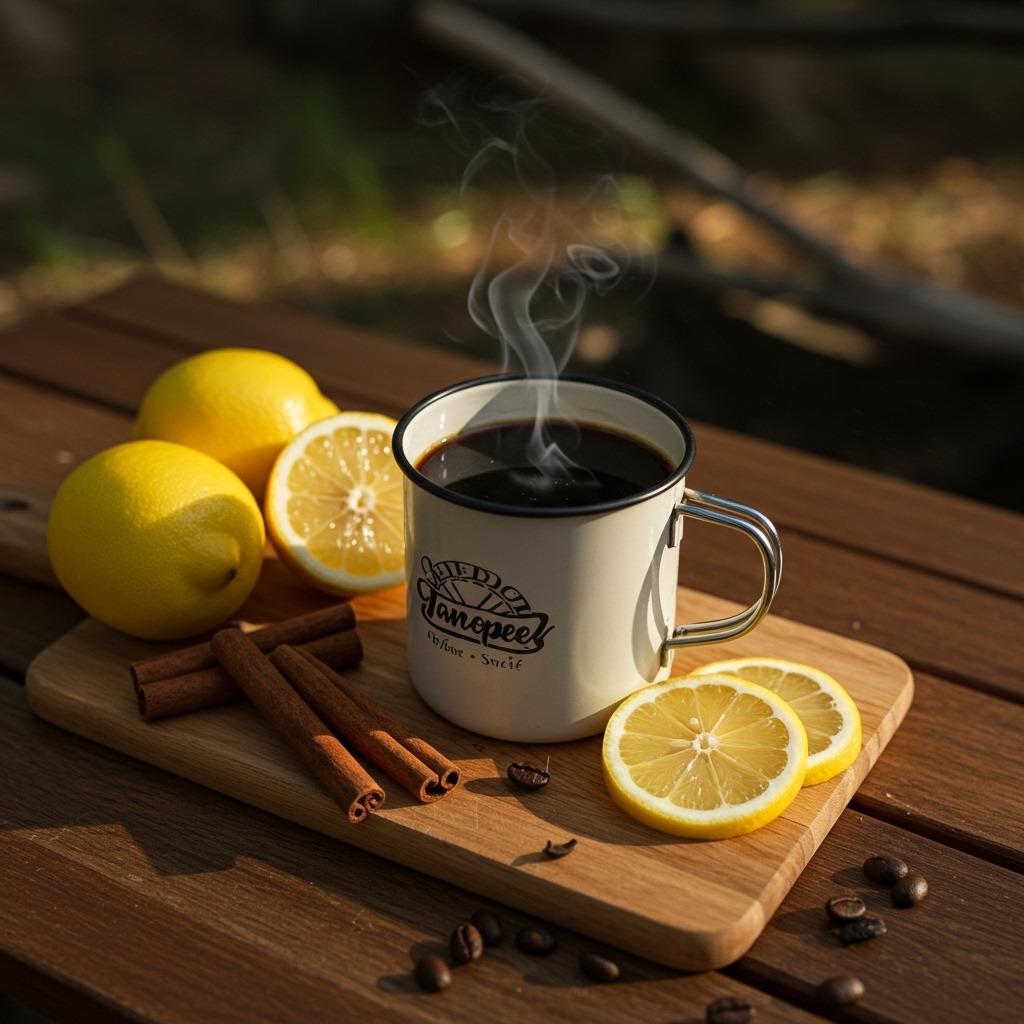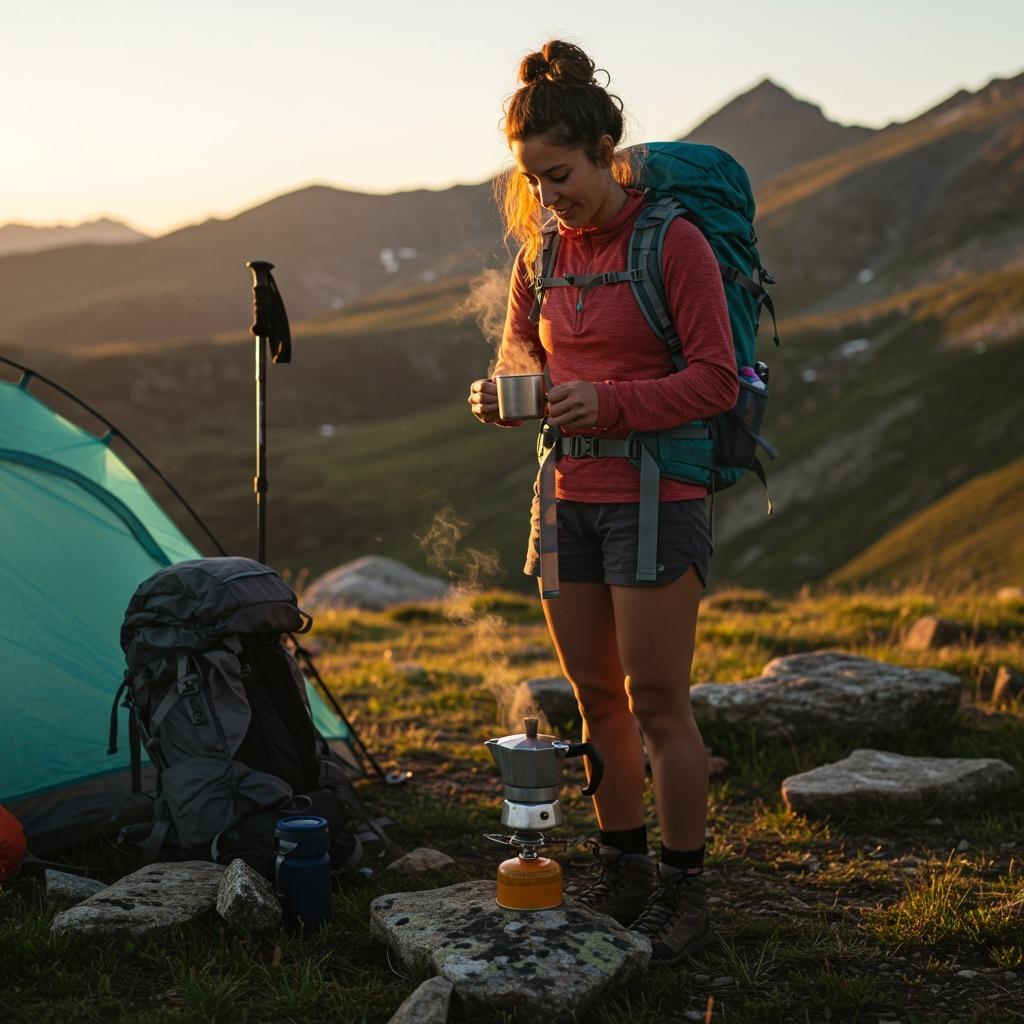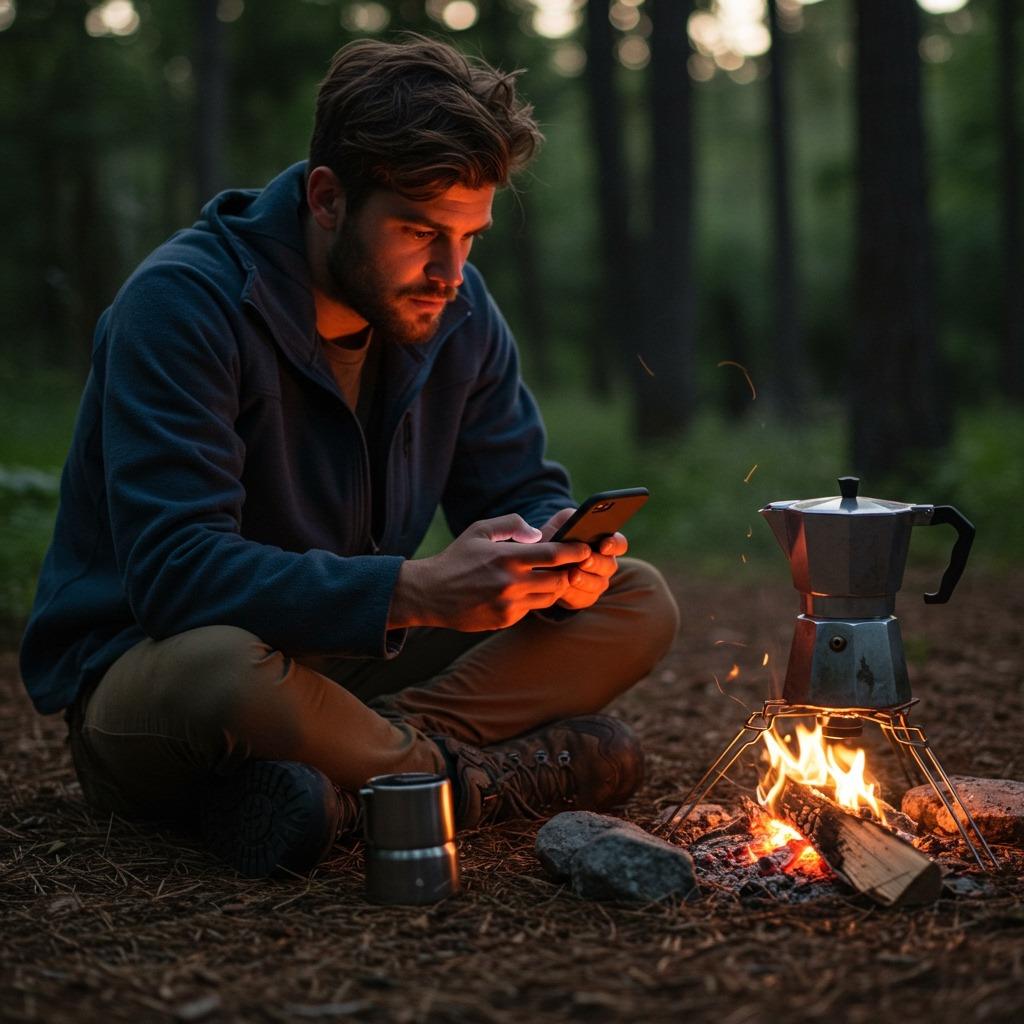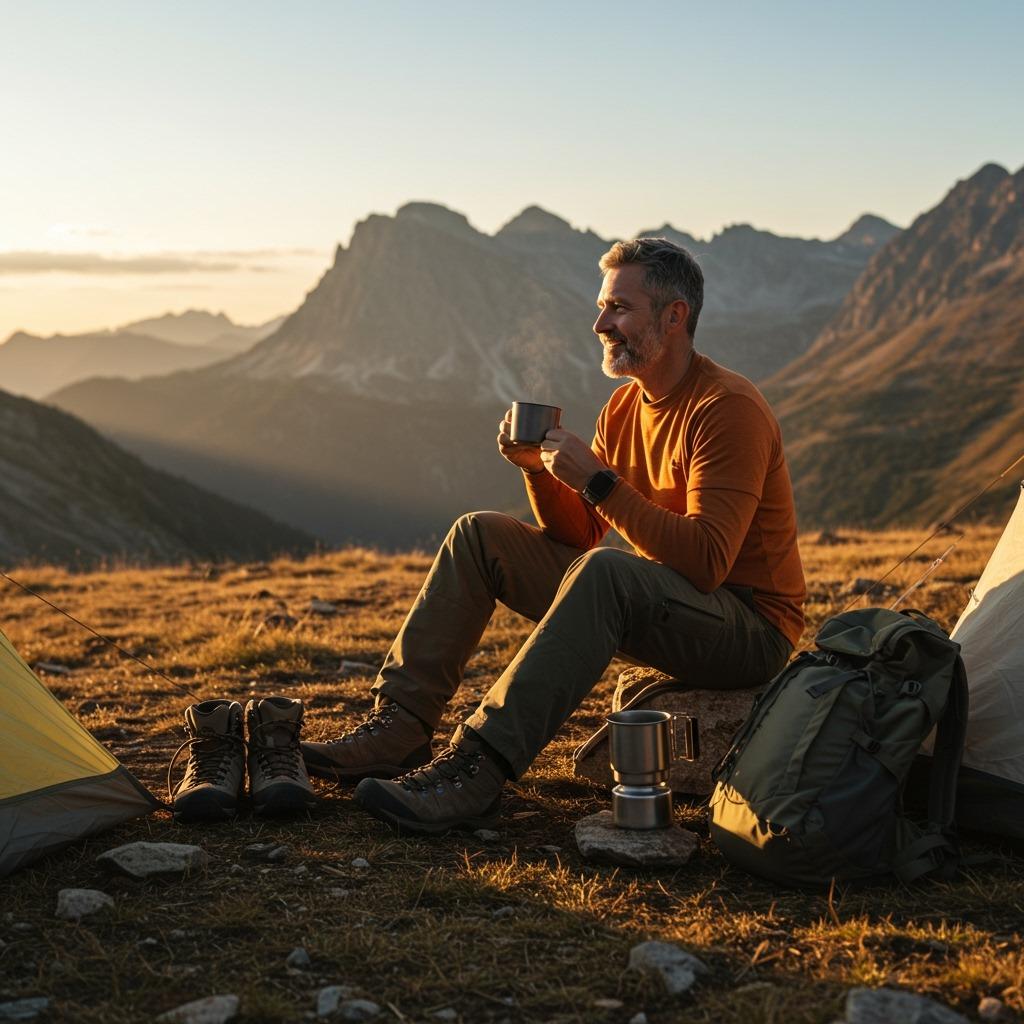I’ll never forget the morning I first heard about the “coffee loophole” from a fellow hiker at the trailhead. She swore by this mysterious coffee trick that was supposedly helping her shed pounds without changing her camping routine. As someone who’s spent countless mornings brewing coffee over a camp stove, I had to dig deeper into what this viral trend was all about.
The coffee loophole refers to a specific method of drinking black coffee with added ingredients like lemon juice, cinnamon, and honey within seven seconds of feeling hungry to suppress appetite and potentially boost metabolism. This social media trend has gained massive popularity on TikTok, with proponents claiming it can help with rapid weight loss and increased fat burning.
Whether you’re a weekend car camper or a serious backcountry adventurer, understanding this trending topic can help you make informed decisions about your outdoor nutrition strategy. Let’s dive deep into what the coffee loophole actually is, whether it works, and how it might fit into your outdoor lifestyle.
What Exactly Is the Coffee Loophole?
The coffee loophole isn’t just about drinking your morning cup of joe. It’s a strategic approach that involves timing, specific ingredients, and preparation methods designed to maximize coffee’s natural weight loss properties.
The basic concept revolves around drinking a specially prepared coffee mixture whenever you feel hungry, ideally within seven seconds of the hunger pang striking. The idea is that this rapid consumption will create a sense of fullness and trigger the release of appetite-suppressing hormones like dopamine and adrenaline.
This trend emerged from various weight loss communities and gained traction through social media platforms, particularly TikTok. Advocates claim that the specific combination of ingredients, consumed at precisely the right moment, can trick your body into feeling satisfied without consuming actual food.
The Core Ingredients
Most coffee loophole recipes include these key components:
- Strong black coffee (preferably high-caffeine robusta)
- Fresh lemon juice (1 teaspoon)
- Ground cinnamon (1/4 teaspoon)
- Raw honey (1 teaspoon, optional)
Some variations also incorporate turmeric, ginger, mint, cardamom, or even supplements like chromium and green tea extract. The beauty of this recipe is its simplicity—perfect for outdoor enthusiasts who appreciate minimal prep work while camping.
Advanced versions might include MCT oil, collagen powder, or adaptogenic herbs like ashwagandha. However, these additions complicate the basic premise and may not be practical for backcountry adventures where weight and space matter.

The Science Behind Each Ingredient
Understanding why these ingredients are included helps outdoor enthusiasts make informed decisions about incorporating this trend into their adventure routines.
Coffee’s Role in Weight Management
Black coffee contains caffeine and chlorogenic acid, both compounds that can boost metabolism and slow carbohydrate absorption. According to research published in the American Journal of Clinical Nutrition, caffeine can increase metabolic rate by 3-11% and enhance fat oxidation during exercise.
The caffeine stimulates the release of gastrin, a hormone that accelerates digestive processes, essentially acting like an “accelerator pedal” for your stomach. This mechanism explains why many hikers naturally reach for coffee before hitting the trail—it genuinely provides both mental alertness and physical preparation.
Coffee also contains antioxidants called polyphenols, which may help reduce inflammation and support overall health. For outdoor enthusiasts who put their bodies through physical stress, these anti-inflammatory properties could provide additional benefits beyond weight management.
Lemon Juice Benefits
The vitamin C in lemon juice supports cardiovascular health, giving you more energy for those challenging hikes. Fresh lemon juice contains citric acid, which may help improve iron absorption and support immune function—crucial factors when you’re spending extended periods outdoors.
The acidity can also stimulate digestion and help your body process waste more efficiently. Some proponents believe that the pectin fiber in lemon juice helps create a feeling of fullness, though most commercial lemon juice contains minimal fiber.
Interestingly, the Mayo Clinic notes that vitamin C requirements increase during periods of physical stress, making lemon a potentially valuable addition for active individuals.
Cinnamon’s Anti-Inflammatory Properties
Cinnamon functions as a natural anti-inflammatory agent, which can be particularly beneficial if you’re increasing your physical activity through hiking or camping. The spice contains compounds called cinnamaldehyde and cinnamic acid, which have been studied for their potential metabolic benefits.
Research suggests that cinnamon may help regulate blood sugar levels, potentially reducing cravings and energy crashes that can derail outdoor adventures. For those long trail days where maintaining steady energy matters, this blood sugar regulation could prove valuable.
Reducing inflammation helps manage the aches and pains that come with more active outdoor pursuits. After a challenging day on the trail, any natural anti-inflammatory support is welcome.
Honey for Sustained Energy
Research suggests honey may help limit weight gain and fat accumulation while providing prolonged energy. Unlike refined sugar, honey contains trace minerals and antioxidants that support overall health.
The fructose in honey gets processed differently than regular sugar, potentially providing more sustained energy release. This sustained energy could help you avoid high-calorie trail snacks during longer outdoor adventures.
For camping situations, honey also offers antimicrobial properties and won’t spoil like many other sweeteners. It’s a practical choice for extended outdoor trips where food safety matters.

How to Make Coffee Loophole Coffee
Creating this trending beverage is surprisingly simple, making it perfect for camp cooking:
Step-by-Step Instructions
Step 1: Brew Strong Coffee
Start with a robust black coffee using your preferred brewing method. Whether you’re using a camp percolator, French press, or pour-over setup, aim for a strong brew with high caffeine content. The coffee should be hot but not scalding—you need to drink it quickly.
Step 2: Add Lemon Juice
Squeeze about a teaspoon of fresh lemon juice into your coffee. Fresh juice works better than bottled, though it requires a bit more effort on the trail. Pack a small citrus squeezer or simply cut lemons in advance and store them in a sealed container.
Step 3: Incorporate Cinnamon
Add a quarter teaspoon of ground cinnamon. Pro tip: If you don’t like the gritty texture, mix the cinnamon with your coffee grounds before brewing to extract the flavor without the texture issues. Pre-mixed cinnamon coffee blends can save time and effort.
Step 4: Sweeten with Honey (Optional)
A teaspoon of honey can provide sustained energy and may help you avoid food cravings longer. Raw, unprocessed honey offers the most nutritional benefits, though any honey will work for the basic recipe.
Step 5: Mix and Drink Quickly
Stir everything together and consume within seven minutes for maximum appetite-suppressing effects. The key is drinking it as soon as you feel hungry, not waiting until you’re already starving.
Camping Modifications
For backcountry adventures, consider pre-mixing your dry ingredients (cinnamon and any powdered additions) in small containers. Fresh lemon juice can be replaced with lemon essential oil (food-grade only) or citric acid powder for weight savings.
Single-serve instant coffee packets work well for this recipe, though the flavor won’t match fresh-ground beans. The convenience trade-off might be worth it for longer expeditions where every ounce matters.
If you’re practicing primitive camping, you can still make this recipe over an open fire using a camp pot or percolator.
Does the Coffee Loophole Actually Work?
The scientific evidence behind the coffee loophole remains limited. While individual ingredients show promise, there are no direct studies proving the efficacy of this specific seven-second timing method.
What Research Does Support
Studies have shown that drinking four cups of coffee daily could reduce body fat by 4%, though the results aren’t significant enough to determine major benefits. The research comes from various sources, including studies published in the Nutrients journal examining coffee’s effects on metabolism.
Black coffee has been linked to modest weight loss, primarily due to its appetite-suppressing effects. The National Institutes of Health has funded research showing that caffeine can temporarily boost metabolic rate and enhance fat oxidation during exercise.
The thermogenic effect of caffeine means your body burns slightly more calories processing it. For outdoor enthusiasts who are already active, this small boost might compound with exercise benefits.
The Reality Check
Many nutrition experts emphasize that substitutes, tricks, or hacks cannot replace a balanced diet and healthy eating habits. The coffee loophole’s simplicity and bold claims about rapid weight loss oversimplify the complexities of weight management.
Registered dietitians consistently point out that sustainable weight loss requires long-term lifestyle changes, not quick fixes. The seven-second timing requirement seems particularly arbitrary and lacks scientific backing.
Most concerning is the emphasis on suppressing natural hunger signals. Your body’s hunger cues exist for important reasons, especially when you’re engaging in physically demanding activities like hiking or camping.
Potential Risks and Considerations
Before jumping on this trend, outdoor enthusiasts should consider several factors that could impact their safety and enjoyment in the wilderness.
Physical Safety Concerns
Consuming large amounts of caffeine, especially on an empty stomach, can lead to jitters, anxiety, and digestive issues—not ideal when you’re miles from civilization on a backcountry hike. These effects can impair judgment and coordination, both crucial for outdoor safety.
The diuretic effects of excessive caffeine can contribute to dehydration, a serious concern for hikers and campers. When you’re already losing fluids through sweat and exertion, adding diuretic effects could be dangerous.
High caffeine intake can also interfere with sleep patterns. Quality rest is essential for outdoor adventures, both for safety and enjoyment. Poor sleep can lead to poor decision-making on the trail.
Nutritional Concerns
Suppressing appetite before or during physically demanding activities can be counterproductive and potentially dangerous. Your muscles need adequate fuel for energy, endurance, and recovery.
The emphasis on appetite suppression raises red flags among nutritionists, who worry about people overriding their body’s natural cues. This is particularly concerning for active individuals who have higher caloric needs.
Inadequate nutrition can lead to fatigue, poor judgment, and increased injury risk—all serious concerns when you’re in remote outdoor locations. The “bonk” that cyclists and hikers experience when they run out of fuel is a real physiological phenomenon.
For those planning extended adventures, check out proper hiking snacks that provide sustained energy rather than appetite suppression.

Better Alternatives for Outdoor Enthusiasts
Instead of relying on questionable trends, focus on proven strategies that work well with an active outdoor lifestyle. These approaches provide sustainable results without compromising your safety or performance on the trail.
Timing Your Coffee Strategically
Consider timing your coffee consumption strategically—drinking it 30-60 minutes before meals or exercise can provide a natural metabolic boost. The sweet spot typically falls between 9:30 AM and 11:30 AM when cortisol levels naturally dip.
Pre-exercise caffeine consumption has been shown to enhance athletic performance and fat oxidation. For hikers, this means better endurance and potentially improved enjoyment of challenging trails.
Avoid consuming large amounts of caffeine late in the day, as this can interfere with sleep quality. Good sleep is crucial for recovery and next-day performance.
Hydration and Balanced Nutrition
Proper hydration supports every aspect of outdoor performance, from temperature regulation to joint lubrication. Coffee can contribute to your fluid intake, but shouldn’t replace water as your primary hydration source.
Focus on balanced meals that include adequate protein, healthy fats, and complex carbohydrates. These macronutrients provide sustained energy for outdoor activities without the crashes associated with simple sugars or stimulants.
The Academy of Nutrition and Dietetics recommends focusing on whole foods and balanced eating patterns rather than restrictive approaches or supplement-dependent strategies.
Natural Activity and Movement
Regular physical activity through hiking and camping naturally supports healthy weight management without the need for extreme dietary interventions. The combination of cardiovascular exercise, strength training (from carrying gear), and outdoor exposure provides multiple health benefits.
High-altitude hiking can naturally boost metabolic rate due to increased energy demands. The caloric burn from a full day of hiking often exceeds what most people can achieve through dietary tricks alone.
For those interested in staying warm while camping, remember that your body needs adequate fuel to generate heat, making extreme appetite suppression counterproductive in cold weather conditions.
Sustainable Coffee Practices
Rather than focusing on weight loss gimmicks, concentrate on making your outdoor coffee experience more enjoyable and sustainable. Learn proper brewing techniques that work well with camp equipment.
Invest in quality gear that can produce good coffee in outdoor conditions. A reliable coffee setup can enhance your camping experience without requiring complex recipes or questionable health claims.
Choose ethically sourced, high-quality beans that taste great around the campfire. The ritual of making good coffee can be a rewarding part of your outdoor routine, regardless of any weight loss effects.
If you’re interested in traditional outdoor coffee methods, learn about cowboy coffee techniques that have served adventurers for generations.

Practical Applications for Outdoor Adventures
If you’re determined to try the coffee loophole despite its limitations, here are some practical considerations for outdoor applications.
Gear and Preparation
Pack ingredients in waterproof containers to prevent moisture damage. Small plastic bottles work well for lemon juice, while spice containers keep cinnamon dry and accessible.
Consider the weight and space implications of carrying additional ingredients. Every ounce matters on backpacking trips, so evaluate whether the potential benefits justify the extra weight.
Pre-measure ingredients into daily portions to avoid carrying full containers. This approach saves weight and simplifies preparation in camp conditions.
Safety Modifications
Never suppress appetite to the point where you feel weak or dizzy, especially when engaging in physically demanding activities. Your safety depends on maintaining adequate energy levels.
Monitor your body’s response to increased caffeine intake, particularly at altitude, where caffeine effects can be amplified. Reduce consumption if you experience negative side effects.
Maintain regular meal schedules even if using appetite suppressants. Your body needs consistent fuel for outdoor activities, regardless of whether you feel hungry.
Integration with Outdoor Activities
If you choose to try this approach, do so during less demanding activities first. Car camping or day hiking provides a safer environment to experiment than multi-day backcountry trips.
Consider seasonal factors when planning to use appetite suppressants. Cold weather camping requires more calories for thermoregulation, making appetite suppression potentially dangerous.
Plan backup nutrition strategies in case the coffee loophole doesn’t work as expected. Carry adequate food supplies regardless of appetite suppression effects.
Those planning extended outdoor activities should focus on easy camping meals for the family that provide reliable nutrition without depending on trending dietary approaches.
The Bottom Line on Coffee Loopholes
While the coffee loophole trend offers an intriguing approach to weight management, it’s more social media hype than scientific breakthrough. The individual ingredients may offer modest benefits, but there’s no magic seven-second window that transforms regular coffee into a weight-loss miracle.
For outdoor enthusiasts, the focus should remain on sustainable practices that enhance your adventures rather than quick fixes that might compromise your energy levels on the trail. Good coffee can certainly be part of a healthy outdoor lifestyle, but it works best when paired with proper nutrition, adequate hydration, and the natural exercise that comes with hiking and camping.
The most effective approach to weight management for outdoor enthusiasts involves consistent physical activity, balanced nutrition, and sustainable lifestyle choices. These fundamentals provide lasting results without the potential risks associated with extreme dietary interventions.
Remember, the best “loophole” for maintaining a healthy weight while enjoying outdoor adventures is simply staying active, eating balanced meals, and choosing quality ingredients—whether in your coffee cup or your trail mix. Focus on building long-term habits that support both your health goals and your outdoor pursuits.
Your outdoor adventures should energize and fulfill you, not depend on questionable dietary trends. Trust in proven principles of nutrition and exercise, and let the natural benefits of outdoor activity support your health goals in sustainable ways.
FAQ
Q: Is the coffee loophole safe for hikers and campers?
A: While the ingredients are generally safe, relying on appetite suppression during physically demanding activities like hiking can be counterproductive. Your body needs adequate fuel for outdoor adventures, and suppressing hunger signals could lead to inadequate nutrition when you need energy most.
Q: Can I use instant coffee for the coffee loophole while camping?
A: Yes, you can use instant coffee, though fresh-brewed coffee may provide better results. The key ingredients (lemon, cinnamon, and honey) work with any coffee preparation method. Instant coffee is often more practical for backcountry adventures due to weight and convenience considerations.
Q: How much weight can I realistically lose with the coffee loophole?
A: Scientific evidence shows only modest effects, with studies indicating about 4% body fat reduction from drinking four cups of coffee daily, though results aren’t significant enough to guarantee major benefits. Most nutrition experts emphasize that sustainable weight loss requires comprehensive lifestyle changes, not single-ingredient solutions.
Q: Should I try the coffee loophole before long hikes?
A: It’s not recommended to suppress your appetite before physically demanding activities. Your body needs proper nutrition for energy, endurance, and safety on challenging trails. Consider having a balanced breakfast and saving coffee for its natural performance-enhancing effects rather than for appetite suppression.
Q: Are there any side effects to drinking coffee loophole mixtures regularly?
A: Potential side effects include jitters, anxiety, digestive issues, and interference with natural hunger cues. The high caffeine content can be particularly problematic on an empty stomach. Long-term use might lead to caffeine dependence and disrupted sleep patterns, both concerning for outdoor enthusiasts who need reliable energy and good rest.
